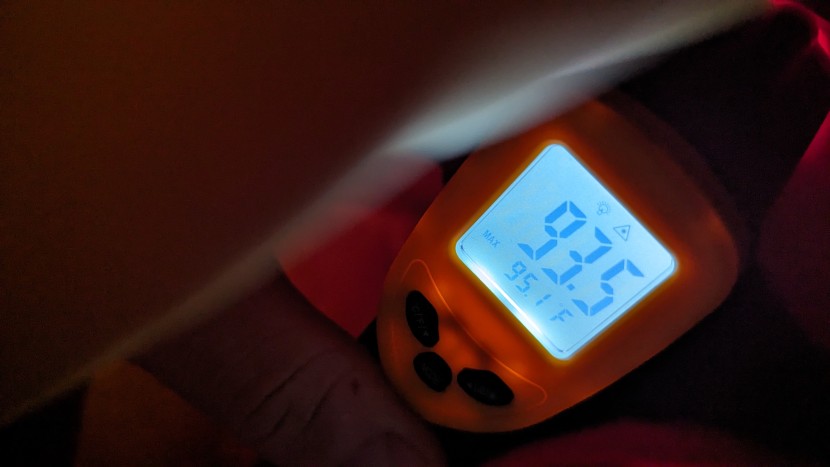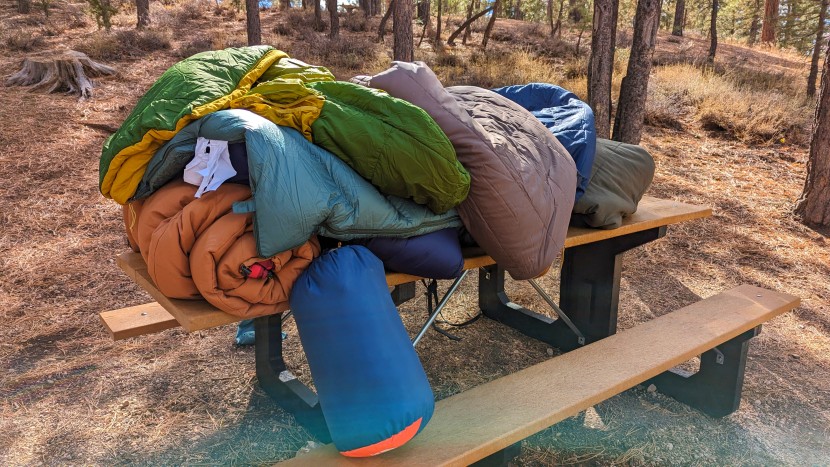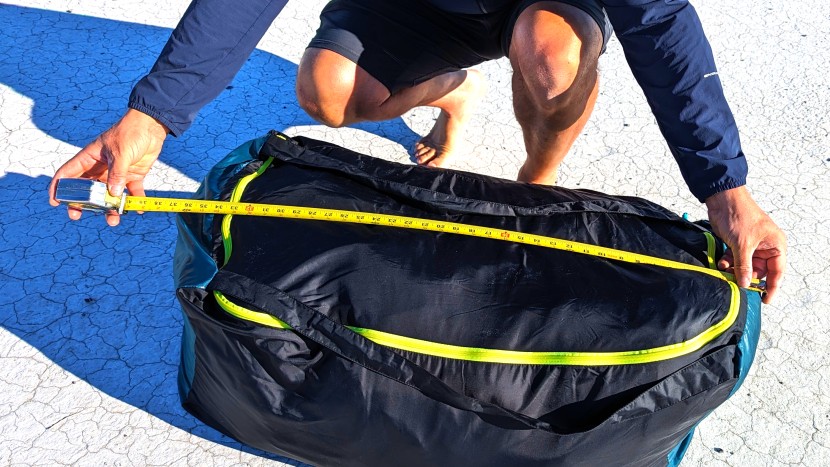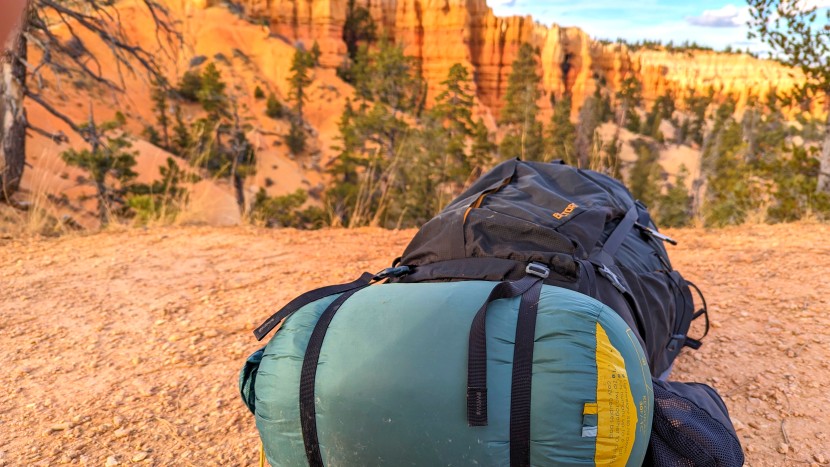We've been testing traditional camping sleeping bags in campgrounds throughout the nation for several years. We've also conducted our fair share of testing right in our own backyards. Prior to testing, we study lists of key bags that are popular with consumers and have top reviews. Our experts also actively scan the marketplace for the latest offerings from reputable manufacturers known for their quality and performance record. Once our research is complete, we narrow down our list and then purchase the bags we feel will offer the best options for our readers. Here's how we then dive into testing.
Warmth
As fun as cool features and gadgets can be, nothing takes the place of having your toes (and the rest of you) nice and toasty on a chilly night. That's why we give warmth the most weight out of the four metrics we examined.
During our warmth tests, we noted the manufacturer warmth rating assigned to each bag and then scored them accordingly. We then tested each bag's ability to retain heat with the help of a laser thermometer and a lot of lying around. After setting our home thermostat to our standard testing temperature, we climbed into each bag (consecutively) and snuggled in for 5 minutes. When the timer ended, we carefully peeked under the bag and took a laser thermometer reading of the top inside liner, just above our stomach, and then ranked each bag from highest temps to lowest.
Real-life experience comprised the final step in our warmth testing. Over several months, we took to the road to spend as many weekends as possible in tents and campers to make up our own minds about how each bag performed. If camping wasn't an option, we slept in our own backyards.
Comfort
What's the point of being warm if you're miserable all night trying to get comfortable? After all, isn't the whole idea of car, tent, or trailer camping to have as many of the conveniences of home while you enjoy the beauty of nature? That's why we leaned more toward testing roomier rectangular bags for this review and weighted this aspect pretty heavily. We scored each bag for its size, thickness, and appealing fabrics.
In addition to sleeping in the bags each night and rating each on comfort, we wanted to establish a real baseline to measure each one. So, with the help of hardwood floors, campground dirt, and concrete driveways, we flopped each bag down without a pad and rolled around for several minutes to get a real idea of the bag's natural padding and all-around space. We rated each model according to padding, ease of movement, and roominess.
Features
Special features that make the bags unique are almost as important as comfort. During our testing, we examined each bag to find even the smallest features that added to its value and function.
The most important feature for us was each bag's resistance to water. This feature directly correlates to our most important metric — warmth. Let's face it — if your bag is wet, you're miserable or worse. We poured one cup of water onto each model and let it stand for five minutes. Those bags that resisted water for the full five minutes received much higher scores than those that did not. The best performers in this test were bags with synthetic exterior shells. The worst performers were bags with natural fibers like cotton.
In addition to water resistance, we looked for interior storage pockets, hanging hooks, offset stitching, and drawstrings. We also focused heavily on all-things-zippers: zipper quality, full-length zippers (that allow the bag to be opened flat), two-way zippers, reversible zippers, velcro zipper closures, and zipper smoothness.
Our bags also scored big points for having crucial features like cinching shoulder baffles, which help keep warm air from escaping from the bag's main opening.
Full-length zipper draft tubes are the unsung heroes of the sleeping bag world. These insulated strips of fabric follow the entire zipper and are designed to prevent airflow through small holes in the zipper teeth. We looked for thick, well-insulated, double-sided draft tubes that started at the top of the bag and ran all the way to the end of the zipper at the foot box.
Some manufacturers consider the end user when they go to the drawing board. This extra thought into the design can give a product an x-factor that makes it more appealing to the consumer in terms of use, convenience, comfort, etc. We took one final look at each bag to find the options/extras that each bag had that no other bag possessed. Extras like hoods, removable liners, recycled materials, appealing fabrics, and unique storage sacks were high on our list.
Packed Size
Whether you're lugging several bags from the car to camp or finding storage for them in your trailer, packed size can sometimes be a deal-breaker, especially with large families or people with limited space.
There's nothing worse than trying to fit a sleeping bag into a stuff sack that's too small. We unpacked and packed each bag into its storage sack five times and then rated them an overall rating of 1 to 10 based on the combined factors of whether the bag fit into its stuff sack and, if so, whether it does so easily.
After packing and unpacking each bag several times over, we then pulled out the measuring tape and recorded each bag's packed dimensions, and then ranked them accordingly. We also weighed each bag individually and ranked them from heaviest to lightest. We even considered whether each bag could pack up small enough and light enough to double as a backcountry bag in a pinch.
Conclusion
Our side-by-side testing process was simple yet very effective in helping us single out the bags we liked best. We were able to identify key features and performance variables, which allowed us to find bags that filled a variety of needs and price ranges. In the end, we think our comprehensive study will help you find a camping bag that is best for you.








